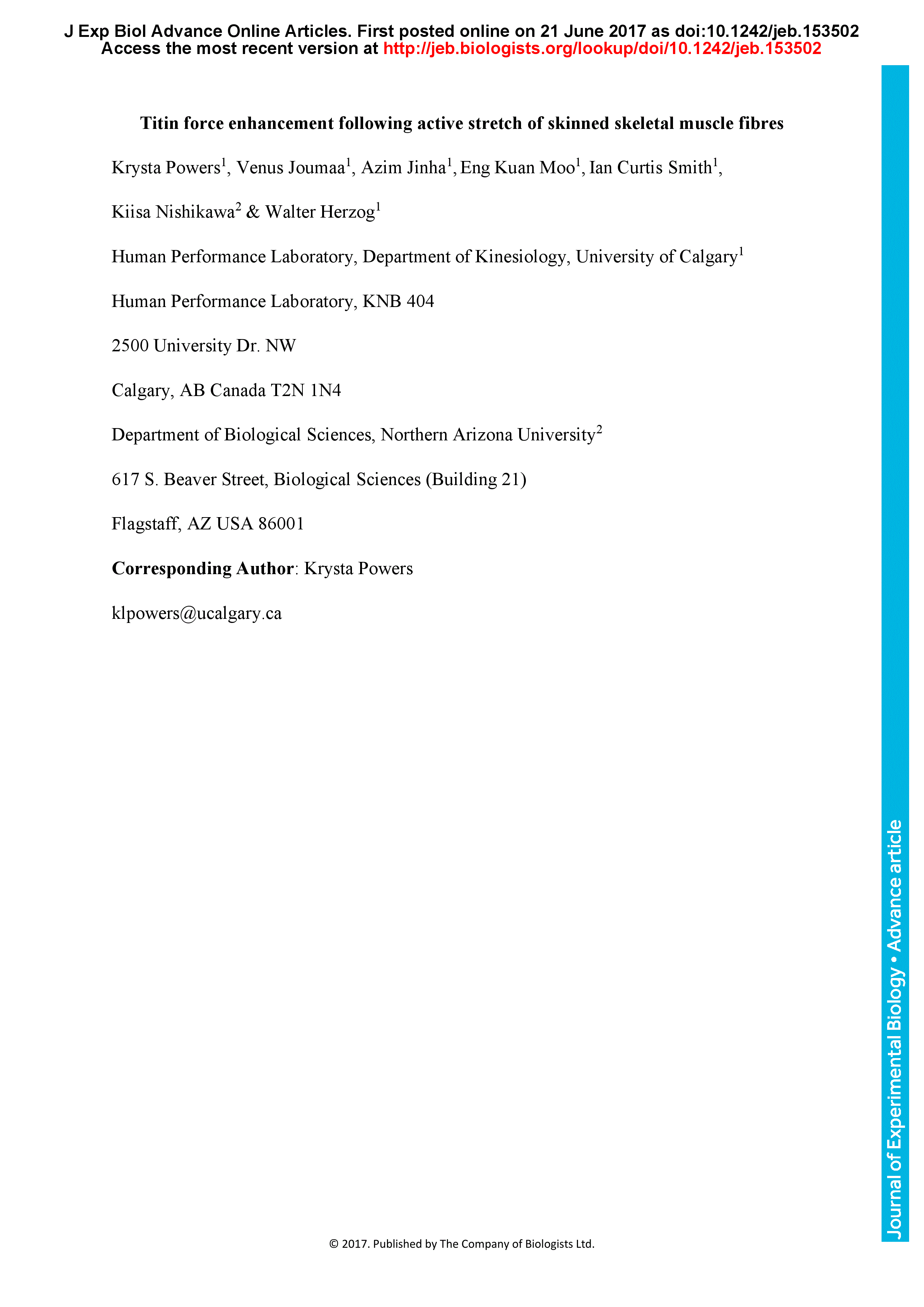In actively stretched skeletal muscle sarcomeres, titin-based force is enhanced, increasing the stiffness of active sarcomeres. Titin force enhancement in sarcomeres is vastly reduced in mdm, a genetic mutation with a deletion in titin. Whether loss of titin force enhancement is associated with compensatory mechanisms at higher structural levels of organization, such as single fibres or entire muscles, is unclear. The aim of this study was to determine whether mechanical deficiencies in titin force enhancement are also observed at the fibre level, and whether mechanisms compensate for the loss of titin force enhancement. Single skinned fibres from control and mutant mice were stretched actively and passively beyond filament overlap to observe titin-based force. Mutant fibres generated lower contractile stress (force divided by cross-sectional area) than control fibres. Titin force enhancement was observed in control fibres stretched beyond filament overlap, but was overshadowed in mutant fibres by an abundance of collagen and high variability in mechanics. However, titin force enhancement could be measured in all control fibers and most mutant fibres following short stretches, accounting for ∼25% of the total stress following active stretch. Our results show that the partial loss of titin force enhancement in myofibrils is not preserved in all mutant fibres and this mutation likely affects fibres differentially within a muscle. An increase in collagen helps to reestablish total force at long sarcomere lengths with the loss in titin force enhancement in some mutant fibres, increasing the overall strength of mutant fibres.
Titin force enhancement following active stretch of skinned skeletal muscle fibres
Currently Viewing Accepted Manuscript - Newer Version Available
- Split-screen
- Views Icon Views
- Open the PDF for in another window
-
Article Versions Icon
Versions
- Version of Record 01 September 2017
- Accepted Manuscript 01 January 2017
- Share Icon Share
-
Tools Icon
Tools
- Search Site
Krysta Powers, Venus Joumaa, Azim Jinha, Eng Kuan Moo, Ian Curtis Smith, Kiisa Nishikawa, Walter Herzog; Titin force enhancement following active stretch of skinned skeletal muscle fibres. J Exp Biol 2017; jeb.153502. doi: https://doi.org/10.1242/jeb.153502
Download citation file:
Advertisement
2023 JEB Outstanding Paper Prize shortlist and winner

The JEB Editors are delighted to announce the shortlisted authors for the 2023 JEB Outstanding Paper Prize. Read the winning paper - Tiny spies: mosquito antennae are sensitive sensors for eavesdropping on frog calls - by Hoover Pantoja-Sanchez and Brian Leavell from Ximena Bernal's lab at Purdue University, USA.
JEB Science Communication Workshop for ECRs

If you’re an early-career researcher interested in science communication and are attending the SEB Annual Conference in Prague this summer, come a day early and join the JEB Editors at a sci comm workshop to learn the key writing skills needed to promote your research to a broad audience beyond your peers (1 July at 14.30-17.30). Places are limited to 24 attendees, and applicants should apply through the SEB registration page by 30 April 2024.
Bridging the gap between controlled conditions and natural habitats in understanding behaviour

Novel technologies enable behavioural experiments with non-model species, in naturalistic habitats and with underexplored behaviours. In their Commentary, Scholz and colleagues discuss how to obtain a deeper understanding of the natural ecology and lifestyle of study animals.
Beluga metabolic measures could help save species

To help save animals from extinction, it’s important to understand what each species needs to survive. This led Jason John et al. to measure the metabolic rates of captive belugas to develop a ‘fish calculator’ showing that the whales need to eat ~23 salmon per day.
ECR Workshop on Positive Peer Review

Are you an ECR looking for tips on how to write concise, astute and useful manuscript reviews? If so, join the JEB Editors at a 2-hour JEB-sponsored Workshop on Positive Peer Review at the Canadian Society of Zoologists annual meeting in Moncton on 9 May 2024 at 13.00-15.00. There are 25 spaces for ECRs and selection is first come, first serve. To sign up, check the ECR Workshop box when you register for the CSZ meeting.



